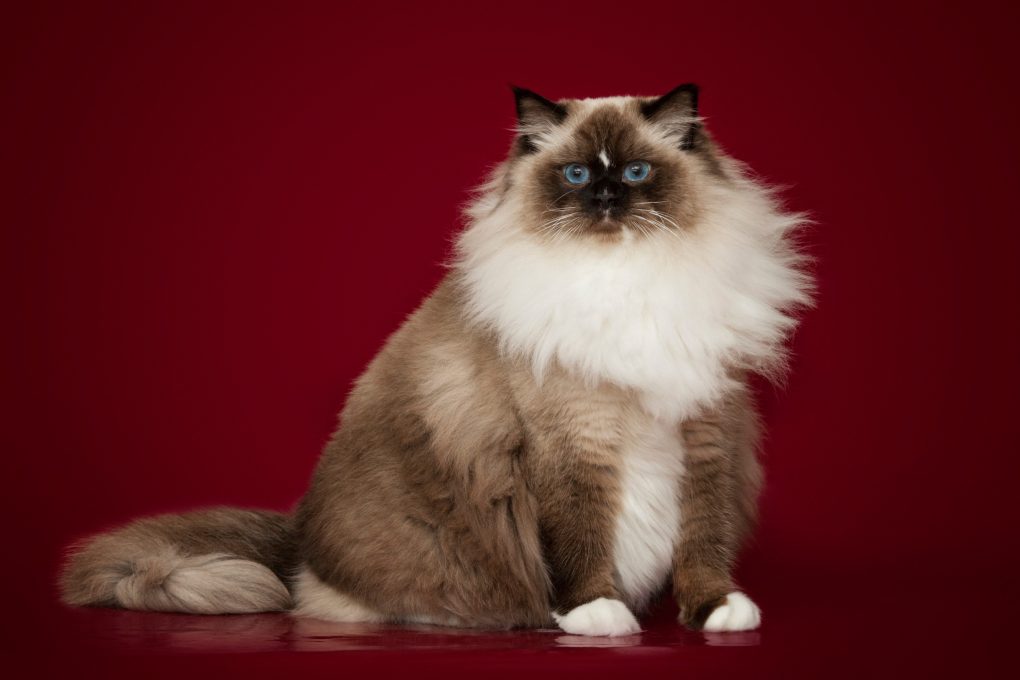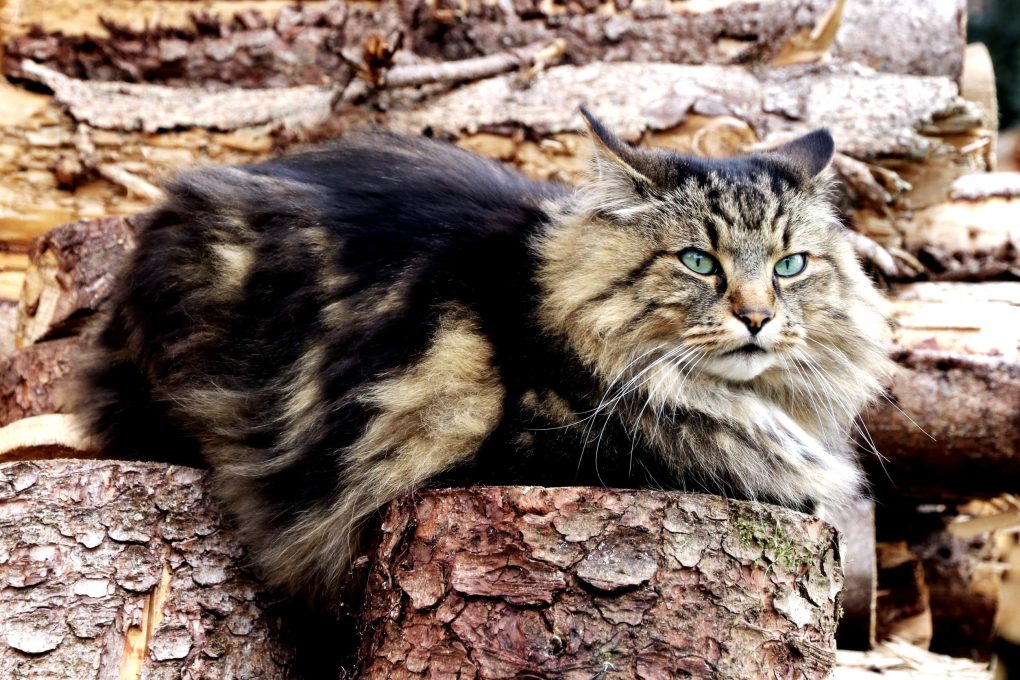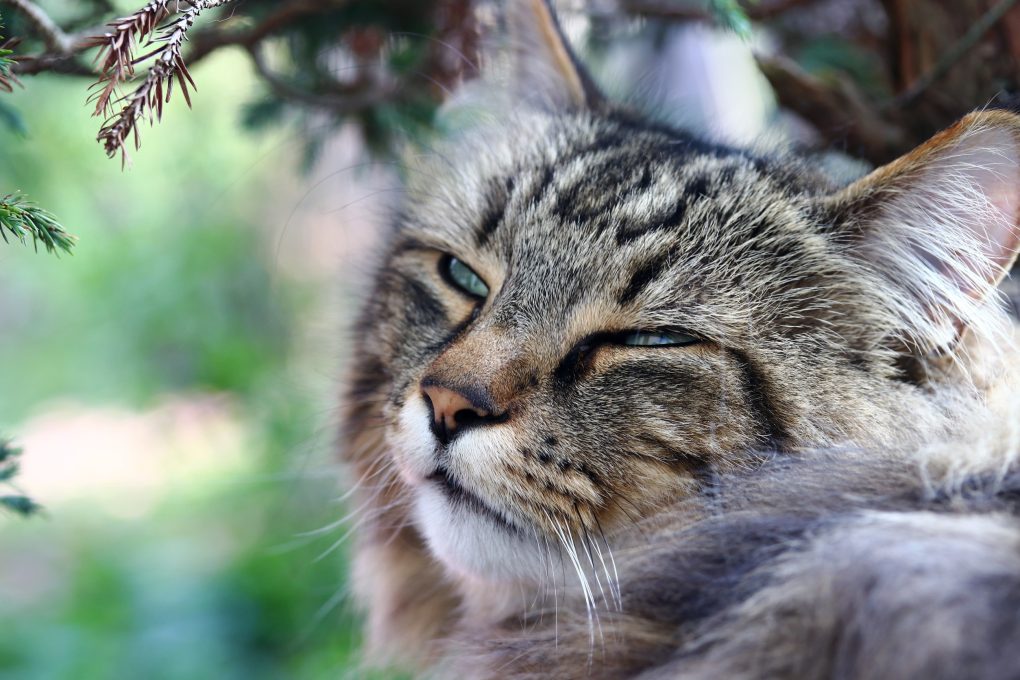Norwegian Forest Cat vs. Ragdoll: The Similarities and Differences Between Ragdoll and Norweigan Forest Cats
Norwegian Forest cats are a large and athletic breed that loves to climb and explore their surroundings. They have independent and self-sufficient personalities. On the other hand, Ragdolls are a docile breed with affectionate natures, a large, fluffy breed with pointed coloring, and tend to have a laid-back and mellow demeanor.
Ragdoll cats are “floppy” or “ragdoll-like” when picked up, as they tend to go limp and relax in their owner’s arms. In terms of grooming, both breeds require regular brushing to maintain their beautiful coats, but the Norwegian Forest cat’s fur is thicker and may require a bit more attention.


Table of Contents
The Similarities Between Ragdoll and Norweigan Forest Cats
Coat
The Norwegian Forest cat and the Ragdoll have long, fluffy coats that require regular grooming to keep them in good condition. The Norwegian Forest cat has a thick, water-resistant coat that has evolved to protect them from Norway’s cold, harsh climate. Their coat is double-layered, long and flowing, with a mane of longer fur around their neck and a bushy tail.
Meanwhile, a Ragdoll’s coat is also long and fluffy, with a silky texture that is very soft to the touch. They have a pointed coat pattern, which means that the face, ears, legs, and tail are a different color than the rest of the body. Like the Norwegian Forest cat, their coat is double-layered, with a soft undercoat and a longer outer coat.
Both breeds require regular grooming to prevent the matting and tangling of their long fur. Brushing their coat a few times a week will help to remove loose hair, distribute natural oils, and prevent hairballs. Regular bathing can also help keep their coat looking clean and healthy.
Good With Children
The Norwegian Forest cat is an independent and adventurous breed, but they are also affectionate and gentle with their families. They enjoy being around people and often follow their owners around the house. They are typically patient and tolerant with children, and their sturdy build means they can handle rough play without getting hurt.
Similarly, the Ragdoll is known for their docile and relaxed temperament. They are often “puppy-like” in their behavior, as they enjoy following their owners around and often seek attention and affection. They are known for being good with children and are generally patient and tolerant of their playful antics.
It’s important to note that while both breeds are good with children, it’s still important to supervise young children around any cat to ensure that they are interacting appropriately and not accidentally hurting the cat. Additionally, it’s important to teach children how to handle and interact with cats gently and respectfully to prevent any potential accidents or injuries.
Health Issues


The Norwegian Forest cat and the Ragdoll are generally healthy and have a long life expectancy of 12 to 15 years. However, like all breeds, they are susceptible to certain health issues.
One potential health concern for both breeds is hypertrophic cardiomyopathy (HCM), a type of heart disease that can lead to heart failure. Both breeds have a higher risk of developing HCM than other breeds, so it’s important to have them regularly screened by a veterinarian.
Another potential health issue for both breeds is obesity. Both breeds tend to overeat and become overweight if their food intake is not monitored. Obesity can lead to various health problems, such as joint issues, diabetes, and heart disease, so it’s important to feed them a balanced diet and provide plenty of opportunities for exercise.
The Norwegian Forest cat is also prone to certain genetic conditions, such as glycogen storage disease IV (GSD IV), a metabolic disorder affecting liver function. They can also develop hip dysplasia, a hereditary condition affecting their hip joints, and can cause pain and mobility issues.
Conversely, the Ragdoll can be prone to dental issues, such as gingivitis and periodontal disease, and can also develop bladder stones, which can cause discomfort and difficulty urinating.
The Differences Between Ragdoll and Norweigan Forest Cats
Size
The Norwegian Forest cat and the Ragdoll are both larger than the average domestic cat, but there are some differences in their size and body type. For example, the Norwegian Forest cat is a large, muscular breed with a rectangular body shape.
They can weigh between 12 to 16 pounds and can stand up to 12 inches tall at the shoulder. They have strong legs and long, bushy tails that help them balance and maneuver as they climb and jump.
Conversely, the Ragdoll is slightly smaller and more moderately built than the Norwegian Forest cat. They can weigh between 15 to 20 pounds and can stand up to 9 to 11 inches tall at the shoulder. They have a more rounded body shape and a long, plush coat that gives them a soft, cuddly appearance.
Personality


The Norwegian Forest cat is an independent and active breed. They love the outdoors and have great hunting skills; they enjoy exploring and climbing. They are also intelligent and curious and enjoy interactive play with their owners, but they do not typically lap cats and may prefer to be near their owners rather than on their laps.
On the other hand, the Ragdoll is known for their docile and relaxed personality and is “floppy” due to their tendency to go limp when picked up, which has earned them the name “Ragdoll.” They are often described as “dog-like” cats, as they enjoy following their owners around and will often greet them at the door; and are also known for their love of cuddling and often seek out laps to curl up in.
Regarding their relationship with water, the Norwegian Forest Cat likes water compared to the Ragdoll cat. Known for its affinity for aquatic activities, the Norwegian Forest Cat enjoys playing with water and may even be dipping its paws in the water bowl or joining their humans in the shower. In contrast, while the Ragdoll breed may not share the same enthusiasm for water as the Norwegian Forest Cat, individual preferences can vary, and there may be Ragdolls who also develop an affinity for water.
Both breeds are generally friendly and social and enjoy being around people. However, the Norwegian Forest cat may be better suited for households that can provide them with plenty of opportunities for outdoor exploration and play. At the same time, the Ragdoll may be better suited for households looking for a more laid-back and cuddly companion.
